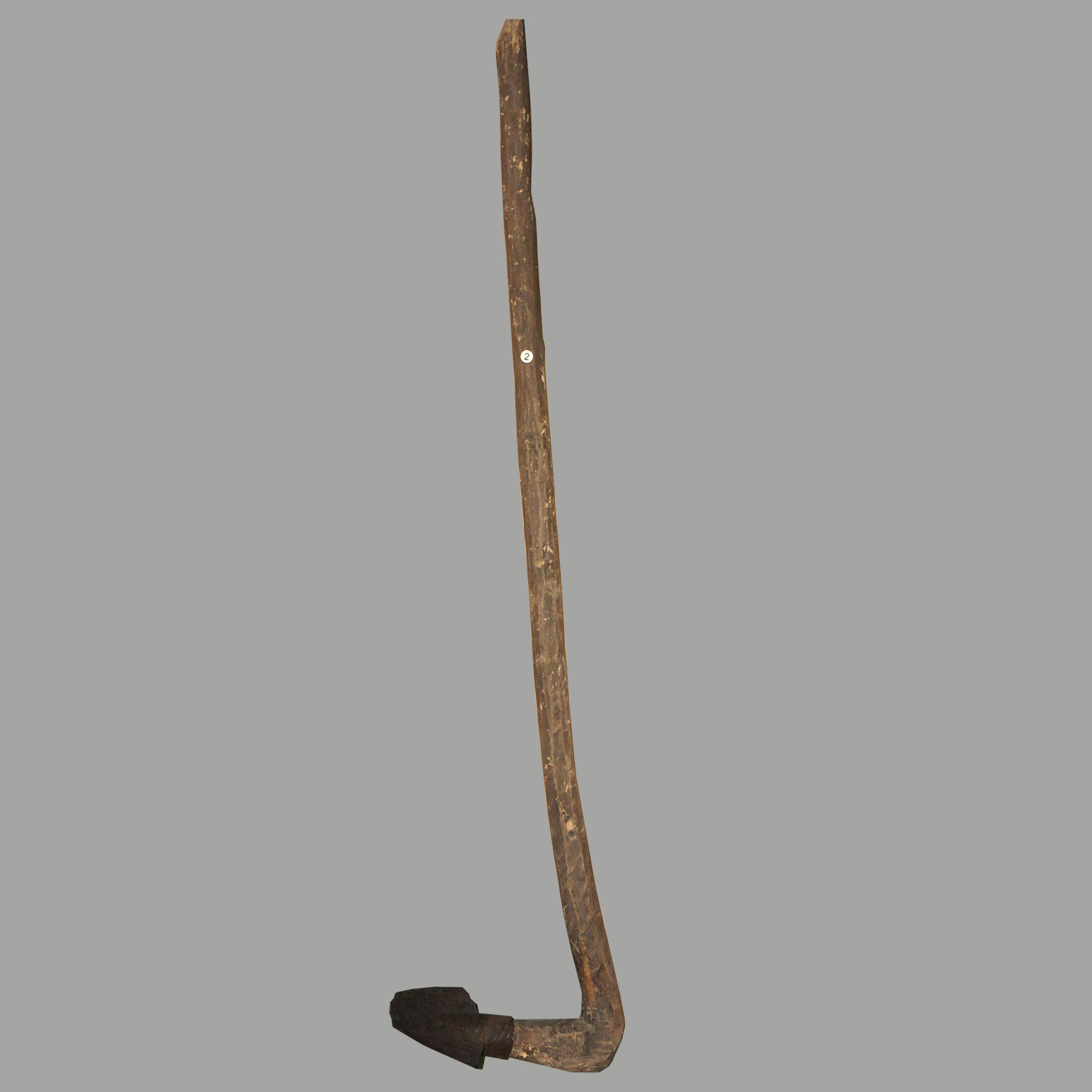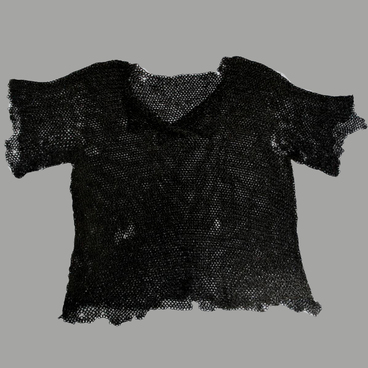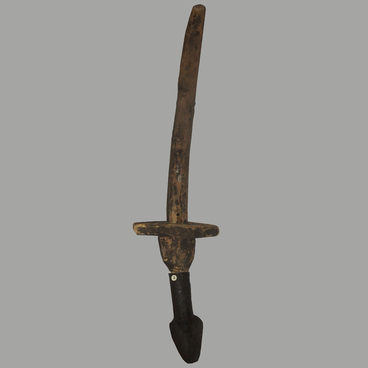Abyl was the name of an ancient farming tool used to hoe the soil. The tool resembled a hoe in function and appearance and consisted of an elongated wooden base and a small metal tip narrowed downwards.
Abyl (Hoe) Shor
Creation period
Beginning of the 20th century
Dimensions
146,5x9 cm
Technique
Forging, wood processing
Collection
Exhibition
1
Open in app#1
Unknown Author
Abyl (Hoe) Shor
#2
#4
About exhibit
#3
The abyl exhibited in the museum is from the Mountain Shoriya, the habitat of the southern Shors. Shors are a Turkic-speaking people the number of which nowadays amounts to about 14,000. There are two ethnographic groups of Shors: southern, living in the mountains and taiga, and northern, living in the plain.
This special ethnos is a result of the merger of the local Ket-speaking and foreign Turkic-speaking tribes. Historians believe that the formation of the Shor people began in the 17th century, when the Kuznetsky uyezd emerged. At the same time, when the Russians began to actively develop the upper reaches of the Tom River, the first mentions of the Shors or, as they are also called, Kuznetskie Tatars appeared.
Up until the beginning of the 20th century, the Shor people lived according to their traditional way of life with some of the remains of the clan community preserved. Production was mainly of household level, and trades - pottery, weaving, leather and woodworking - were mainly plied by women. One of the most important trades of the Shors was blacksmithing, as well as metal mining and processing. However, when the territory of their residence became part of the Russian Empire that trade fell into disrepair.
This abyl was discovered by Georgy Blynskiy, one of the founders of the Novokuznetsk Ethnography Museum, an inventor and local historian. He was born in Kuznetsk, and spent his childhood and youth in a gold mine, where he worked as a mine foreman. In 1917, Blynskiy moved to Prokopyevsk and joined the exploration work at the local field deposit.
In 1920, he returned to Kuznetsk and took a position as the head of Abashevsky mine. It was then that Blynskiy made friends with Dmitry Yaroslavtsev, a lover of the antique, and helped him enlarge and systematize an extensive collection of findings. Together the researchers described the flora, fauna and sources of minerals in the vicinity of Kuznetsk.
After Yaroslavtsev’s death, his collection passed to Blynskiy. On November 7, 1927, the latter donated his house and collection to the city. This date is generally accepted to be the day of foundation of the Novokuznetsk Ethnography Museum.
This special ethnos is a result of the merger of the local Ket-speaking and foreign Turkic-speaking tribes. Historians believe that the formation of the Shor people began in the 17th century, when the Kuznetsky uyezd emerged. At the same time, when the Russians began to actively develop the upper reaches of the Tom River, the first mentions of the Shors or, as they are also called, Kuznetskie Tatars appeared.
Up until the beginning of the 20th century, the Shor people lived according to their traditional way of life with some of the remains of the clan community preserved. Production was mainly of household level, and trades - pottery, weaving, leather and woodworking - were mainly plied by women. One of the most important trades of the Shors was blacksmithing, as well as metal mining and processing. However, when the territory of their residence became part of the Russian Empire that trade fell into disrepair.
This abyl was discovered by Georgy Blynskiy, one of the founders of the Novokuznetsk Ethnography Museum, an inventor and local historian. He was born in Kuznetsk, and spent his childhood and youth in a gold mine, where he worked as a mine foreman. In 1917, Blynskiy moved to Prokopyevsk and joined the exploration work at the local field deposit.
In 1920, he returned to Kuznetsk and took a position as the head of Abashevsky mine. It was then that Blynskiy made friends with Dmitry Yaroslavtsev, a lover of the antique, and helped him enlarge and systematize an extensive collection of findings. Together the researchers described the flora, fauna and sources of minerals in the vicinity of Kuznetsk.
After Yaroslavtsev’s death, his collection passed to Blynskiy. On November 7, 1927, the latter donated his house and collection to the city. This date is generally accepted to be the day of foundation of the Novokuznetsk Ethnography Museum.
#5
Novokuznetsk Ethnography Museum
read morehide
00:00
00:00
1x
Abyl (Hoe) Shor
Creation period
Beginning of the 20th century
Dimensions
146,5x9 cm
Technique
Forging, wood processing
Collection
Exhibition
1
Open in app
Share


